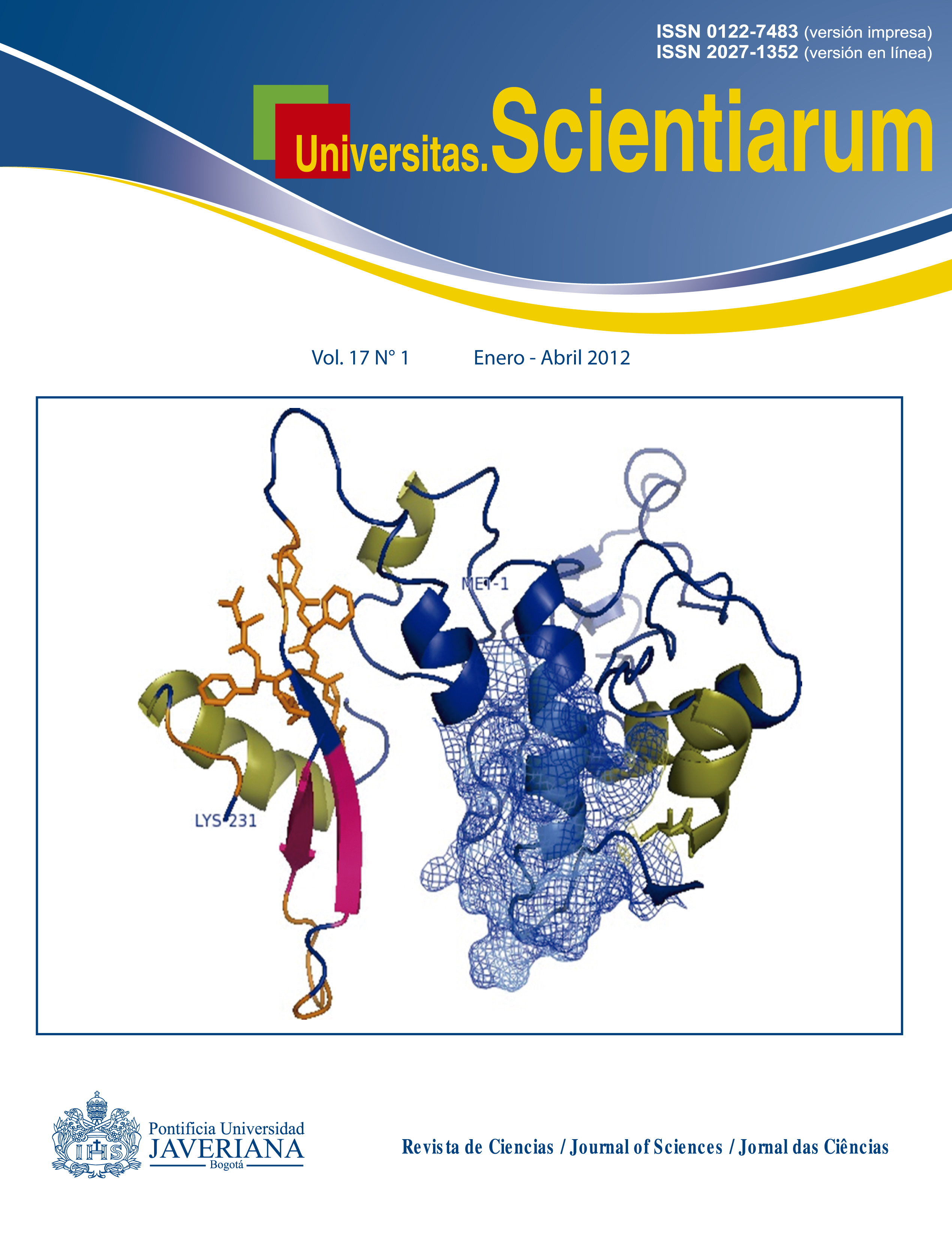Abstract
Objective. Using molecular simulation, we studied the influence of Mg2+ ions on the binding mode of HTLV-I Integrase (IN) catalytic domain (modeled by homology) with the 3,5- Dicaffeoylquinic Acid (DCQA). HTLV-I Integrase homology model was built using template-like crystallographic data of the IN catalytic domain solved for Avian Sarcoma Virus (VSA, pdb: 1VSD). Materials and methods. In order to analyze the role of Mg2+ in the interaction or coupling between 3,5-DCQA and Integrase, three models were created: i) in the absence of Mg2+ ions, ii) with a Mg2+ ion coordinated at Asp15 and Asp72 and iii) model with two Mg2+ ions coordinated at Asp15-Asp72 and Asp72-Glu108. Coupling force and binding free energy between 3,5-DCQA and HTLV-I IN were assessed in the three models. Results. The lowest docking score and free energy binding were obtained for the second model. Mg2+ ion strongly affected the coupling of the inhibitor 3,5-DCQA with HTLV-I catalytic domain of Integrase, thus revealing a strong interaction in the ligand-protein complex regardless of the ligand-catalytic interaction sites for all three models. Conclusion. Altogether, these results strengthen the hypothesis that the presence of one Mg2+ ion could enhance the interaction in the complex by decreasing free energy, therefore increasing the affinity. Moreover, we propose 3, 5-DCQA as an important pharmacophore in the rational design of new antiretroviral drugs.Key words: 3,5 -Dicaffeoylquinic Acid, Human T-Lymphotropic Type I (HTLV-1), Integrase (IN), Homology Model, Molecular Docking, Binding Free Energy, Mg2+ Ions.
Univ. Sci. is registered under a Creative Commons Attribution 4.0 International Public License. Thus, this work may be reproduced, distributed, and publicly shared in digital format, as long as the names of the authors and Pontificia Universidad Javeriana are acknowledged. Others are allowed to quote, adapt, transform, auto-archive, republish, and create based on this material, for any purpose (even commercial ones), provided the authorship is duly acknowledged, a link to the original work is provided, and it is specified if changes have been made. Pontificia Universidad Javeriana does not hold the rights of published works and the authors are solely responsible for the contents of their works; they keep the moral, intellectual, privacy, and publicity rights. Approving the intervention of the work (review, copy-editing, translation, layout) and the following outreach, are granted through an use license and not through an assignment of rights. This means the journal and Pontificia Universidad Javeriana cannot be held responsible for any ethical malpractice by the authors. As a consequence of the protection granted by the use license, the journal is not required to publish recantations or modify information already published, unless the errata stems from the editorial management process. Publishing contents in this journal does not generate royalties for contributors.



